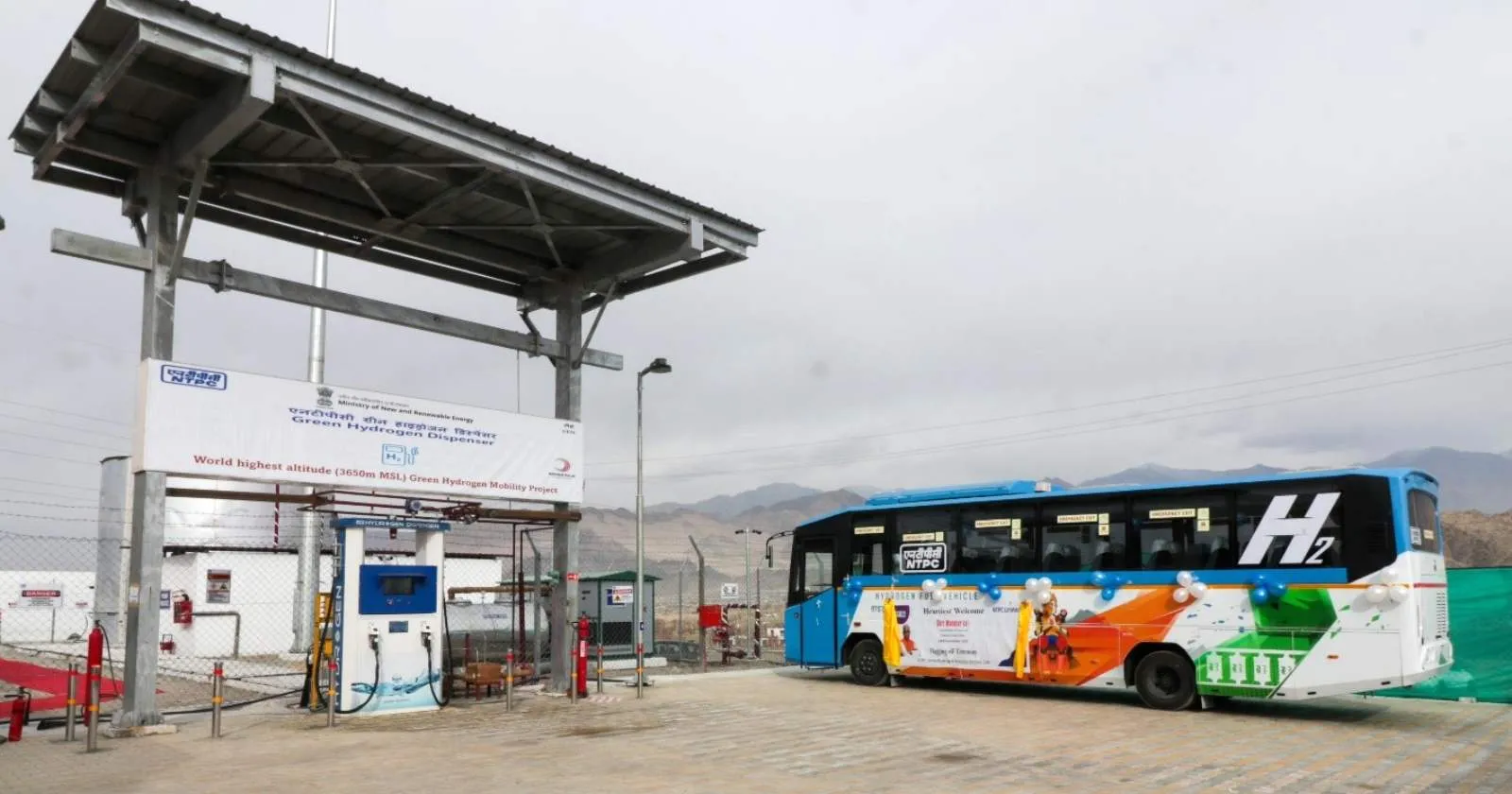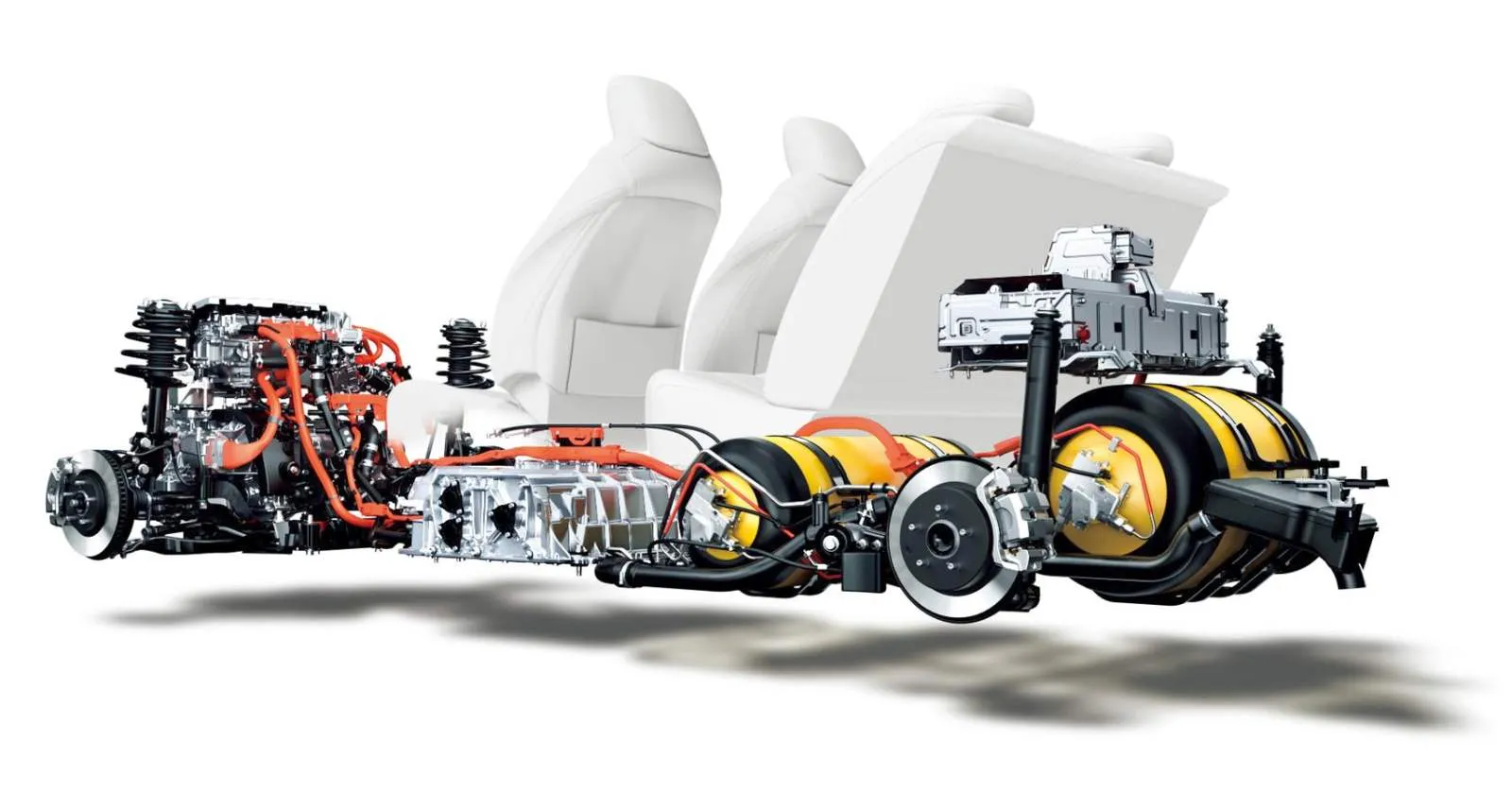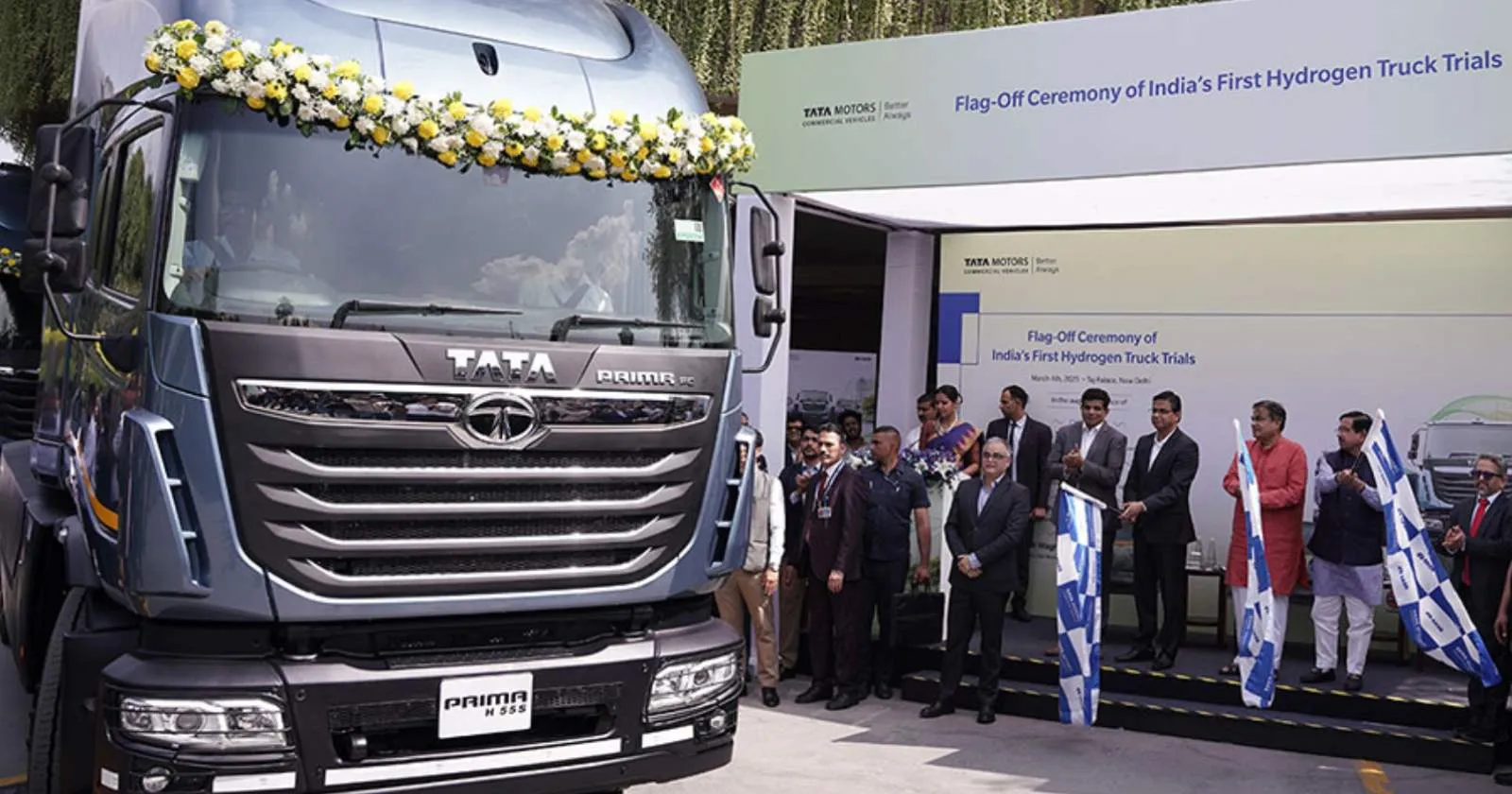
Refuelling is a challenge for hydrogen vehicles, but infrastructure is being set up across India, such as NTPC's Green Hydrogen Mobility Station in Leh, set up in November 2024.

Share Post

Refuelling is a challenge for hydrogen vehicles, but infrastructure is being set up across India, such as NTPC's Green Hydrogen Mobility Station in Leh, set up in November 2024.
The dream of hydrogen-powered transportation traces its roots to visionary 19th-century scientists like William Grove, whose 1839 "gas voltaic battery" demonstrated the foundational principle of fuel cells, yet practical applications remained elusive for over a century. The technology gained critical momentum during the 1960s US space program, where NASA’s Gemini and Apollo missions utilised hydrogen fuel cells not merely for power but as life-support systems — producing drinking water for astronauts while validating the technology’s reliability in extreme environments. This space-era breakthrough ignited global interest, accelerated further by the 1970s oil crises that forced nations to seek alternatives to petroleum. Japan emerged as an early pioneer, with the Musashi Institute’s 1970s fuel cell prototypes, while Germany’s Daimler-Benz and BMW experimented with hydrogen internal combustion engines (H2-ICEs). The 1990s introduced environmental imperatives to the equation, as California’s Zero-Emission Vehicle (ZEV) mandate pressured automakers to explore beyond batteries. This catalytic period saw Toyota, Honda, and General Motors initiate dedicated fuel cell vehicle (FCV) programs, culminating in watershed moments like Honda’s 2008 FCX Clarity — the first leased FCV — and Toyota’s 2014 Mirai, which delivered a 500 km range and five-minute refuelling, proving hydrogen’s viability for mainstream use.
Parallel infrastructure efforts unfolded haltingly, with Japan’s JHFC initiative and Germany’s H2Mobility consortium deploying early refuelling stations, while California’s Hydrogen Highway Network aimed for 100 stations by 2020. Yet progress was uneven, hampered by costs exceeding $3 million per station and regulatory fragmentation. The 2020s witnessed a strategic pivot as hydrogen’s limitations for passenger vehicles became apparent against rapidly advancing battery electric vehicles (BEVs). Lithium-ion batteries achieved cost reductions of 89 percent between 2010–2022, capturing light-duty markets and forcing hydrogen to recalibrate toward heavy transport. Here, hydrogen’s advantages — energy density, rapid refuelling, and minimal payload penalty — proved decisive. Hyundai’s XCIENT trucks (deployed 2023 in Germany and California), Alstom’s Coradia iLint hydrogen trains (operational in Austria), and Toyota-powered fuel cell buses across Asian megacities demonstrated hydrogen’s niche: decarbonising sectors where batteries faltered. Technological strides in proton-exchange membrane (PEM) fuel cells reduced platinum loading by 80 percent since 2005, while Type IV carbon-fiber tanks enabled 700-bar storage. Yet persistent challenges included green hydrogen production costs (4–5x grey hydrogen in 2023) and global station counts barely surpassing 1,000 by 2024 — concentrated in just three regions: East Asia, California, and Western Europe. This divergence between passenger and commercial applications defined hydrogen mobility’s modern era, setting the stage for geographically fragmented adoption.
The narrative remains one of conditional success, shaped by four intersecting drivers: energy security crises (e.g., Europe’s post-Ukraine urgency), industrial policy (US IRA tax credits, China’s FCV subsidies), technological spillovers from materials science, and climate imperatives. Hydrogen’s passenger car ambitions retrenched (GM and Honda dissolved their FCV partnership in 2020), while heavy transport surged: Daimler’s GenH2 truck targets 1,000 km ranges, and Chinese manufacturers deployed 5,100 hydrogen trucks by 2023. This bifurcation underscores a hard-learned lesson: hydrogen mobility thrives not as a universal solution, but where operational demands — daily mileage exceeding 500 km, payload sensitivity, or refuelling downtime constraints — make batteries impractical.

India’s pursuit of hydrogen mobility hinges on a precarious equation: balancing colossal decarbonization potential against systemic infrastructure gaps and economic constraints. The National Green Hydrogen Mission (NGHM), launched in January 2023 with ₹19,744 crore ($2.3B) in funding, targets 5 million metric tons (MMT) of annual green hydrogen production by 2030, aiming for $2/kg costs to enable mobility applications. Yet achieving this demands overcoming interconnected hurdles across four dimensions: production scalability, vehicle economics, infrastructure deployment, and policy coherence. Production faces water-energy nexus challenges: producing 1 kg of hydrogen via electrolysis consumes 9 liters of demineralised water. In water-stressed states like Rajasthan (India’s prime solar hub), this necessitates desalination — adding $0.30–0.50/kg — or wastewater recycling pilots like Chennai’s upcoming 5,000 kg/day plant. Scaling to 5 MMT requires 45 billion liters of water annually and ~125 GW of dedicated renewables, equivalent to 40 percent of India’s 2023 solar/wind capacity. Vehicle economics remain prohibitive: a fuel cell truck costs ₹2.5–3 crore ($300,000–360,000) — 3x a diesel equivalent—with fuel cells (₹1.2 crore) and carbon-fiber tanks (₹40 lakh) dominating costs.
Infrastructure presents a chicken-egg dilemma. Building a hydrogen refuelling station (HRS) costs ₹12–20 crore ($1.5–2.5M), requiring 5–10 kg/day/meter of hydrogen flow to achieve viability. Yet initial fleets — like IndianOil’s 15 FC buses in Delhi — consume under 50 kg/day collectively. Strategic clustering along freight corridors offers a solution: Phase 1 of India’s "Hydrogen Highway" targets 50 stations along the Delhi-Mumbai Industrial Corridor by 2027, co-located with green hydrogen "valleys" in Gujarat and Odisha. Policy enablers must evolve beyond production subsidies (SIGHT scheme’s ₹13,050 crore for manufacturing) to demand-side mechanisms. Green Hydrogen Purchase Obligations (GHPOs) for refiners and fertiliser plants could anchor initial demand, while FAME-III subsidies extending ₹50 lakh per FC bus or ₹25 lakh per H2 truck would bridge the TCO gap. Regulatory gaps persist in hydrogen storage (lack of BIS standards for 700-bar tanks) and safety protocols for urban refuelling.
Feasibility varies sharply by application:
• Long-haul trucks (8 percent of India’s freight, consuming 35 percent of diesel): Highest potential. TCO parity with diesel requires $2.50/kg hydrogen and FC truck prices falling to ₹1.8 crore. Dedicated HRS on NH-48 (Delhi-Mumbai) could unlock this.
• City buses (950,000 nationwide): Depot-based refuelling simplifies logistics. TCO viability needs $2.80/kg hydrogen and 60 percent capital subsidies.
• Port equipment (12 major ports): Adani’s pilot of hydrogen forklifts at Mundra Port shows promise for closed ecosystems.
• Passenger vehicles: Nonviable before 2040 due to BEV dominance (Tata Punch EV: ₹10 lakh vs. Mirai’s ₹60 lakh) and urban HRS costs.
Critical uncertainties include grid stability for gigawatt-scale electrolysis, land acquisition for renewable zones, and competition from LNG trucks (30 percent cheaper emissions reduction). Success demands synchronised advances: cost reductions via domestic manufacturing (Reliance’s 2.5 GW electrolyser gigafactory), seawater desalination powered by offshore wind, and targeted infrastructure avoiding "sprawl." India’s feasibility window is narrow — dependent on executing the NGHM with surgical precision.

The 2040 hydrogen mobility landscape will diverge radically by region and application, shaped by three converging vectors: geopolitical strategies, technological disruption, and climate urgency. Globally, hydrogen will dominate heavy transport niches: fuel cell trucks are projected to capture 30 percent of new heavy-duty sales in the EU and California by 2040 (McKinsey), aided by carbon prices exceeding $100/ton. Maritime applications will emerge, with Maersk’s methanol-enabled container ships (green methanol from hydrogen) composing 10 percent of new builds by 2035. Aviation will see hydrogen-combustion turbofans for regional flights (Airbus ZeroE targets 2035) while synthetic paraffinic kerosene (SPK) from hydrogen bridges long-haul decarbonization. Technology inflection points will reshape competitiveness:
• Solid-oxide fuel cells (SOFCs) for trucks, boosting efficiency to 70 percent with ammonia tolerance.
• Liquid organic hydrogen carriers (LOHCs) like dibenzyltoluene, enabling cheaper transport via existing tankers.
• Automated HRS reducing capex 40 percent via AI-driven compression optimization.
Emerging economies will leverage H2-ICE as a transition tool; Brazil plans to retrofit 500,000 trucks by 2035 using ethanol-reformed hydrogen.
India’s trajectory will unfold in three phases, tightly coupled to NGHM outcomes:
2024–2030 (Validation Phase)
• Deployment of 500 hydrogen buses across Delhi, Bangalore, and Amritsar, funded via FAME-III.
• Pilot freight corridors: 50 H2 trucks on Mumbai-Delhi routes, supported by 20 HRS (IndianOil-NTPC consortium).
• Green hydrogen at $3.50–4/kg from projects like ACME’s Odisha plant (1.3 MMT/year by 2027).
Success Metric: Demonstrate FC truck operational costs within 20 percent of diesel.
2031–2040 (Scale Phase)
• National "Hydrogen Quadrilateral" linking Chennai-Kolkata-Delhi-Mumbai with 500 HRS.
• FC truck sales hit 5,000 units/year (5 percent of heavy-truck market), aided by PLI-driven cost reductions.
• Green hydrogen at $1.80/kg from coastal gigaprojects (e.g., Adani’s 1 GW Kutch facility powered by hybrid solar-wind).
Success Metric: Ports and steel plants source 15 percent of energy from hydrogen derivatives.
Post-2040 (Integration Phase)
• Hydrogen fuels 40 percent of heavy freight and 30 percent of intercity buses.
• Export hubs in Gujarat ship green ammonia to Japan/Korea.
• H2-ICE retrofits phase out as fuel cell trucks dominate new sales.
Success Metric: Transport emissions peak and decline despite freight volume growth.
• Battery disruption: Solid-state batteries (Toyota’s 2027 rollout) could extend heavy-truck range to 800 km, eroding hydrogen’s niche.
• Water wars: Electrolysis demand may conflict with agriculture in Punjab and Rajasthan.
• Geopolitical risk: IRA-subsidised US hydrogen ($0.60/kg post-credit) could flood export markets.
• Capital scarcity: India needs $100 billion for hydrogen infrastructure by 2040 — 50 percent from private sources.
The ultimate determinant will be policy agility. India must:
1. Enact Carbon Taxation (₹2,500/ton by 2030) to favor low-carbon transport.
2. Mandate Hydrogen Inclusion for refineries (5 percent by 2030) and fertiliser plants.
3. Establish H2 Corridor Authorities with land acquisition powers.
4. Launch a National Hydrogen Mobility R&D Mission targeting critical gaps: water-efficient electrolysis and cryo-compressed storage.
In this high-stakes race, India’s advantage lies in renewable resources (750 GW solar potential) and concentrated freight flows (60 percent on 15 percent of highways). If coordinated, hydrogen could decarbonise 200 million tons of annual CO2 from transport while cutting oil imports by $20 billion/year by 2050 — making India a global green hydrogen mobility laboratory.
Dr. Parikshit Gogoi is an Associate Professor at Nagaon University and a Fulbright Fellow, Illinois Sustainable Technology Center (ISTC), University of Illinois Urbana-Champaign, USA.
Dr. Ravindra Prajapati is a researcher at Illinois State Geological Survey, University of Illinois Urbana-Champaign, USA.
Upcoming KTM RC450 Spied; Major Specs Leaked
Acko Drive Team 10 Dec, 2025, 12:32 PM IST
NueGo Expands Network with New Electric Intercity Routes in South and North India
Acko Drive Team 10 Dec, 2025, 10:30 AM IST
ReiseMoto Ties Up with CS Santosh as Strategic Collaborator
Acko Drive Team 10 Dec, 2025, 8:42 AM IST
New-Gen Kia Seltos Debut Today: Here’s What To Expect
Acko Drive Team 9 Dec, 2025, 5:08 PM IST
Gaurav Gupta Appointed Vice President, International Motorcycle Manufacturers Association
Acko Drive Team 9 Dec, 2025, 2:25 PM IST
Looking for a new car?
We promise the best car deals and earliest delivery!
